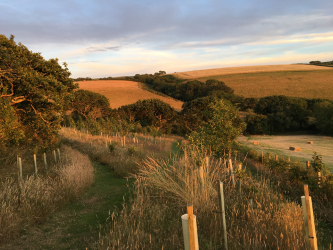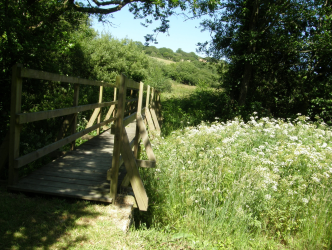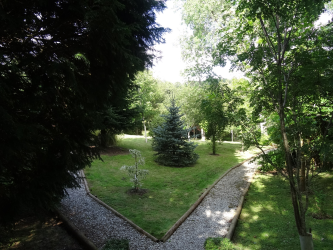Kevin and his wife had formed a love affair with Cornwall from having family holidays there over the years and so in 2005 they decided to purchase a permanent home, a former farmhouse built in 1860, standing in threequarters of an acre and located just east of Fowey, close to the south Cornish coast Their aim was to create a garden but not one which needed a lot of maintenance. An arboretum seemed the answer.
Advice was sought from an arboretum expert in Ashby de La Zouch and a planting program developed with a variety of species which would blossom in the different seasons of the year. The agreed plan was to have large trees to the north acting as windbreaks for the smaller ones, camelias, eucryphia, acers and prunus planted on down slopes behind. A ground canopy of seasonal flowers, bluebells, daffodils and primroses soon started growing naturally beneath them. The first land acquisition occurred in 2006 when a Dutch friend, staying with him, heard running water in a farmer’s field adjacent to his land. This was a large stream draining all the surrounding hills. Knowing that farmers can often be asset rich and cash poor, Kevin made an offer to buy this field and found that he had acquired a wetland bog.

His friend and Stumperlowe Probus club member, Tim Marsh, came to stay at this time and helped design a new pond and bridge across the stream, similar to the one which joins the seventh and eighth fairways at Hallamshire Golf Club. In order to access the wetland a boardwalk was laid. Kevin seeded wildflowers in the meadow and soon yellow rattle and ox eye daisy amongst self-seeded wild orchids and other wildflowers flourished.
Things now started to develop quite quickly with Kevin describing during the final half-hour of his talk how his original plot had grown to one of 42 acres by 2021. This was achieved through a series of shrewd land acquisitions from one or two local farmers who owned adjacent fields. This has resulted in four different forms of habitat appearing on what can be described as the Channer Estate, namely wildflower meadows, marshland, wet woodland and farmland. Kevin, in his own words was becoming a hobby farmer as pigs and beehives were acquired.
His planned objective gathered momentum with the planting of the further arboreta in enclosures edging the fields in 2018, 2020 and 2021. The large fields were rented back to farmers for grazing their cattle, but at the same time various structures were erected including a barn for storing wood, hay bales and tools and a walkway up through the wooded valleys including a “poop deck” which was built around a large oak tree.
Kevin explained how his wife is especially interested in ancient trees, plants with a long history such as wood anemones and insects and butterflies and these added to the general flavour of their surroundings. Animals including deer, stoats, newts and lizards soon started appearing on the land and on the ponds which he created mallard, moorhen and messy Canada geese duly took up residence.
He explained how countryside grants were forthcoming for the planting of trees and hedgerows but the Woodland Trust would only support the planting of five particular species of UK origin trees, Oak, Birch, Hawthorne, Beech and Poplar.
Kevin’s talk was backed up by wonderful pictures, particularly memorable ones being those of butterflies, larvae and a dragonfly emerging from its chrysalis. He ended by touching on the way forward, with the next generation in mind, by explaining how agricultural land escapes Inheritance Tax when passing from one generation to another.
A final thought, Cornwall has many famous gardens including the Lost Gardens of Heligan, Trebah and the Eden Project to name but three. Might Trenneden with its distinguished arboreta and interesting features be another in years to come?



